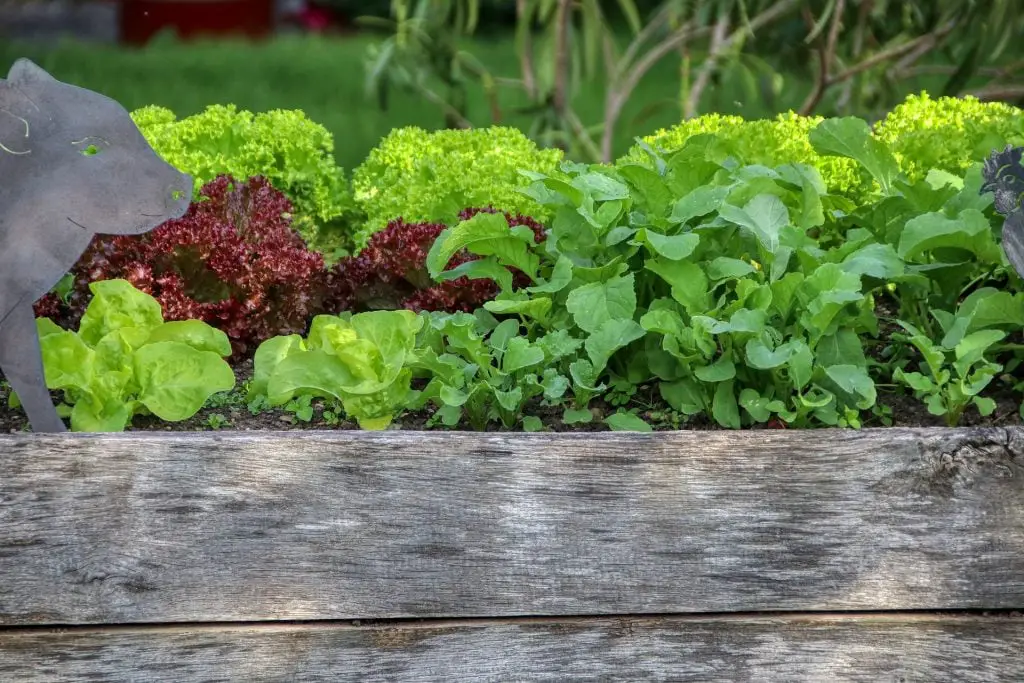Is The Soil In Raised beds Warmer Than The Soil In The Ground? Raised beds have been a popular inclusion in many gardens and are recommended by many experts but do they really help the plants grow faster? Is the soil warmer?
The soil in a raised bed is warmer during the growing season during the daytime. Based on a study by the University of Horticulture and Forestry the temperature of a raised bed is typically 3 to 5°F (2 to 3°C) higher by mid-afternoon under the same growing conditions. However, there is no significant difference in the morning which indicates that raised beds do increase in temperature faster during the day.
These findings also suggest that the raised beds would also be significantly colder in winter due to the increased exposure to ambient temperatures, though there was no data within the study that conclusively proved this. This would mean that raised bed would cool more rapidly at the end of the growing season.
The increased fluctuation in temperature within the raised beds may be problematic in some cases where there is extreme heat involved as it may cause short-term heat stress. This effect can be amplified by the selection of mulch used on the beds. The study showed that the use of black plastic mulch also had a similar effect on soil temperature to raising the beds.

Is It Always Better To Have Warmer Soil?
Soil temperature affects the rate at which chemical reactions occur within the biological systems. This, in turn, affects the rate of growth as it allows the plants to take up nutrients from the soil faster.
For heat-loving crops such as tomatoes, peppers, and eggplants this is a definite advantage in most climates provided that there is not sustained extreme heat. At a temperature above 100°F (38°C), the extreme heat can cause flowers to drop off the plant reducing the productivity of the plant.
However, for crops that prefer cooler conditions such as Cauliflower, Broccoli, Peas, lettuce, and coriander increased soil temperature can have a negative impact. The reason for this is that plants can become stressed and quickly bolt if there is excessive heat.
How Did The Increase Temperature Affect The Yield?
The study investigated the yield of Tomatoes only. The results indicated that the yield was higher in the raised beds when mulched by around 10%. Interestingly, no significant benefit was found when using raised beds without mulch. It is suspected that the level of moisture has played a significant role in the performance of the plants which was shown to be lower in the raised beds.
| Bed Type | Mulch | Yield |
| Raised | Yes | 139.5 kg |
| Raised | No | 116.8 kg |
| In-Ground | Yes | 125.1 kg |
| In-Ground | No | 118.6 kg |
What Are The Pros And Cons Of Installing Raised Beds?
The installation of raised beds has benefits but it also has significant downsides.
Pros
- Increase soil temperatures during the growing season
- Better Drainage
- Easier on knees and backs
- It is more difficult for slugs and snail to access plants
- Can be used to increase growing area if soil below the beds is non-existent or of a poor quality
Cons
- Raised Beds are more expensive to construct
- Raised Beds require more soil to fill them up
- They dry out more readily
- The sides can deteriorate over time creating a maintain issue
- Once invasive weeds get into the bed they are extremely difficult to remove due to the depth of the bed

When Should A Raised Bed Be Installed?
There is no doubt that raised garden beds are significantly more expensive to install if you have a large garden can be extremely cost-prohibitive, compared to in-ground beds which can cost nothing.
In fact, Charles Dowding, a market gardener with 30 years of experience gardener actually suggests not including borders at all on beds, citing several disadvantages which are as follows;
- They cost more
- They provide habitat for pests such as snails and slugs
- Garden edging, which often used to separate the lawn from the garden bed provides opportunities for grass to invade garden beds
If you wish to learn more about his approach to gardening which is low cost, low maintenance, high productive, and aesthetically pleasing watch the video below.
So what are the circumstances when you absolutely need to install a raised garden beds? It is necessary when;
- The soil is unsuitable for growing vegetables. This could be when the area is paved, the soil is of poor quality or the area may be full of roots from a large tree nearby
- The person tending to the garden has mobility issues or a disability which limits their capacity to work in the garden.
Reducing The Costs Of Installing Raised Beds
If there is a need to install a raised bed, or you are like me and you simply like the look of them there are ways to reduce the short and long-term costs of installing them.
The lowest cost and most convenient solution for the installation of a raised bed is to use prefabricated beds that can be purchased on Amazon. There are extremely easy to put together and will take no more than an hour or two to construct.
However, I would suggest that beds constructed from wood be avoided. The main reason for this is that they are often a similar price to galvanized steel ones and will not last as long. To increase their life it is advisable to use a liner as this will reduce contact with the raised bed, this technique is also beneficial with galvanized steel beds. To read more about this and what to use click here.
In terms of design features, there are a few things to be considered, the first is the height of the bed. If you are placing a bed on a hard surface a depth of at least 1 ft (30cm) is recommended though 1.5 to 2ft (45 to 60cm) is preferred.
It is also beneficial to select a bed that that has a protective coating as this will extend the life considerably. Additionally, the color of the coating will have an effect on the temperature that the soil reaches in the beds, darker colors will produce higher temperatures due to the increased absorption of energy.
In regions where the peak temperatures in summer are relatively low, such as the UK, darker colors will be beneficial however, if you live in a region where peak summer temperatures are consistently high then lighter-colored beds would be preferable.
The basic models of the raised bed, shown in the picture below, that arereasonably large in size can be purchased relatively cheaply on Amazon, click here to see the latest price

The best raised bed for cooler climates is the Zenport Garden Raised Bed and Cold Frame Greenhouse Cloche. It has black powder-coated sides to optimize the soil temperature and durability of the in bed along with a cloche that fits neatly over the bed to protect plants in cool weather.
The cloche has large vents which allow it to be ventilated easily along with providing access to the bed. Additionally, the cloche can be purchased separately which is advantageous as they do not generally last also long as the beds. To see the latest price on Amazon click here.

Conclusions
The use of raised beds can be advantageous in increasing daytime soil temperatures and will be beneficial in accelerating the arrival of the crop and also the size of the harvest for heat-loving plants. However, it is important to mulch and water the beds more frequently to ensure that the crops remain moist at all times to maximize the benefit of having a raised bed.
Additional, it is advisable to be selective about the crops that you place in the bed if it is practical. Members of the cucurbit (corn, pumpkins, melon, and zucchini) and the Solanaceae (tomatoes, peppers, and eggplants) family will gain the most benefit from the evaluated temperatures associated with a raised bed particularly in places like the UK.
